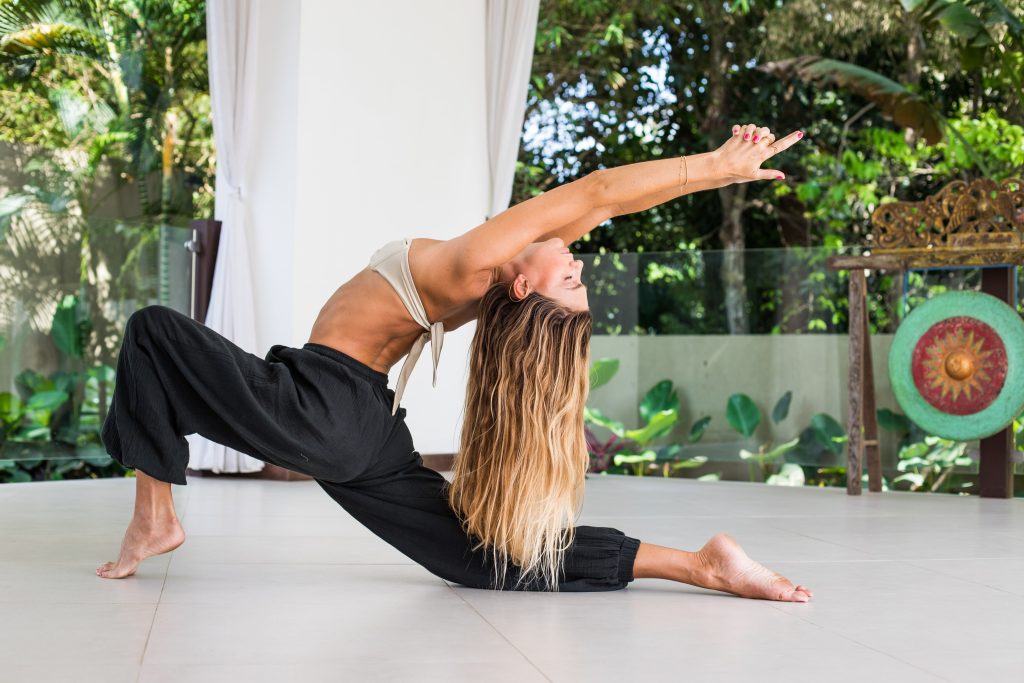In a world that feels like it’s always on fast-forward, finding a moment to pause and breathe can feel like a luxury. Meditation retreats offer that rare chance to step away from the noise, reconnect with yourself, and maybe even find a little Zen in the process. Whether you’re a beginner looking to dip your toes into mindfulness or a seasoned meditator seeking a deeper practice, there’s a retreat out there calling your name. I’ve spent years exploring wellness practices and have even attended a few retreats myself, so I’m excited to share this guide to the best meditation retreats around the world. From serene Himalayan ashrams to lush Thai sanctuaries, let’s dive into the ultimate escapes for your mind, body, and soul.
Why Choose a Meditation Retreat?
Meditation retreats aren’t just vacations—they’re transformative experiences that help you hit the reset button. They provide structured environments to deepen your practice, guided by experts, in settings designed to foster peace. Unlike meditating at home, where your cat might decide it’s playtime mid-breath, retreats offer distraction-free zones to focus inward.
Benefits of Attending a Retreat
Retreats go beyond basic meditation. They often combine mindfulness with yoga, breathwork, or nature immersion, amplifying the benefits. Studies show meditation reduces stress, improves focus, and boosts emotional well-being. A retreat takes this further by removing daily distractions, allowing you to immerse fully in the practice.
- Stress Relief: Disconnecting from devices and routines lowers cortisol levels.
- Clarity and Focus: Structured programs help you hone mindfulness skills.
- Community Connection: You’ll meet like-minded souls, fostering a sense of belonging.
- Skill Development: Learn techniques like Vipassana or Zen to carry home.
Who Should Attend?
Whether you’re a stressed-out professional, a curious beginner, or someone navigating life’s challenges, retreats cater to all. Many are beginner-friendly, while others offer advanced programs for seasoned practitioners. The key is finding one that aligns with your goals—be it relaxation, spiritual growth, or emotional healing.
Top Meditation Retreats Around the World
Here’s a curated list of the world’s best meditation retreats, based on their reputation, programs, settings, and recent reviews. Each offers something unique, from silent Vipassana retreats to luxurious wellness escapes.
1. Tushita Meditation Centre, Dharamshala, India
Nestled in the Himalayan foothills near the Dalai Lama’s home, Tushita is a haven for Tibetan Buddhist meditation. Its 10-day Introduction to Buddhism course combines meditation with teachings on compassion and mindfulness. The serene forest setting and simple accommodations keep the focus on inner work.
Why Visit Tushita?
Tushita’s blend of Buddhist philosophy and meditation is perfect for those seeking spiritual depth. The center offers group retreats and drop-in sessions, with experienced teachers guiding you through practices rooted in the Lama Tsong Khapa tradition. Recent visitors praise its authentic, non-commercial vibe.
- Cost: Donation-based, typically $50–$100 for 10 days.
- Duration: 2–10 days, with longer retreats available.
- Best For: Beginners and intermediate meditators seeking Buddhist teachings.
Pros:
- Authentic Tibetan Buddhist experience.
- Stunning Himalayan views.
- Affordable, donation-based model.
Cons:
- Basic accommodations may not suit everyone.
- Remote location requires travel planning.
2. Kamalaya Wellness Sanctuary, Koh Samui, Thailand
Kamalaya, set on Koh Samui’s pristine beaches, is a luxurious retreat blending meditation, yoga, and holistic spa treatments. Once a meditation spot for Buddhist monks, it offers programs like “Embracing Change” for emotional healing. Recent reviews highlight its nurturing environment and expert facilitators.
Why Kamalaya Stands Out
Kamalaya’s holistic approach combines meditation with Ayurveda, detox programs, and personalized wellness plans. The lush tropical setting and gourmet vegetarian meals make it feel like a five-star escape. It’s ideal for those wanting mindfulness with a touch of luxury.
- Cost: $500–$2,000, depending on program and accommodation.
- Duration: 3–14 days.
- Best For: Those seeking a high-end wellness experience.
Pros:
- Luxurious accommodations and spa facilities.
- Personalized programs for stress relief or transformation.
- Beautiful beachfront location.
Cons:
- Higher price point than many retreats.
- Less focus on strict meditation discipline.
3. Spirit Rock Meditation Center, California, USA
Tucked in the golden hills of Marin County, Spirit Rock is a leader in Vipassana (insight) meditation. Its silent retreats, ranging from weekend getaways to month-long intensives, are grounded in Buddhist teachings. Visitors love the serene setting and world-class teachers.
What Makes Spirit Rock Special?
Spirit Rock’s rigorous yet supportive programs are ideal for deepening your meditation practice. The 411-acre property offers trails for walking meditation and a meditation hall that radiates calm. Recent reviews praise the center’s balance of structure and freedom.
- Cost: $200–$1,500, based on accommodation and duration.
- Duration: 2–30 days.
- Best For: Intermediate to advanced meditators.
Pros:
- Renowned teachers like Jack Kornfield.
- Beautiful, expansive grounds.
- Diverse retreat lengths and formats.
Cons:
- Silent retreats can be intense for beginners.
- Limited availability due to high demand.
4. Blue Cliff Monastery, New York, USA
Founded by Zen master Thich Nhat Hanh, Blue Cliff in the Catskill Mountains offers mindfulness retreats rooted in Engaged Buddhism. Its walking meditations through lush forests and communal meals foster a sense of presence. Attendees rave about the serene atmosphere and supportive community.
Why Choose Blue Cliff?
Blue Cliff emphasizes living in the present moment, with programs blending meditation, yoga, and journaling. The monastery’s “I have arrived, I am home” philosophy resonates deeply, as noted by retreat-goers who feel transformed after just a weekend.
- Cost: $150–$600, depending on length and lodging.
- Duration: 2–7 days.
- Best For: Beginners and those seeking mindfulness in daily life.
Pros:
- Accessible for beginners.
- Strong community feel.
- Scenic Catskill Mountains setting.
Cons:
- Shared accommodations may not appeal to all.
- Limited program variety compared to larger centers.
5. Holy Isle Centre for World Peace, Scotland
Located on a serene island off Scotland’s west coast, Holy Isle blends Tibetan Buddhist practices with environmental stewardship. Its mindfulness retreats, available from April to October, include guided meditations and visits to a historic healing well. Visitors praise its spiritual legacy and tranquil setting.
What Sets Holy Isle Apart?
Holy Isle’s “Five Golden Rules” promote peace and mindfulness, creating a unique retreat experience. The island’s natural beauty and commitment to sustainability make it a haven for eco-conscious meditators. Recent reviews highlight the profound calm of its silent retreats.
- Cost: £50–£300, donation-based for some programs.
- Duration: 3–10 days.
- Best For: Eco-conscious meditators and nature lovers.
Pros:
- Unique island setting with historical significance.
- Affordable pricing.
- Emphasis on mindfulness and sustainability.
Cons:
- Seasonal availability (April–October).
- Remote location requires ferry travel.
6. OSHO International Meditation Resort, Pune, India
In Pune, India, the OSHO resort offers a dynamic approach to meditation, blending active techniques like OSHO Dynamic Meditation with yoga and spa therapies. Set in a 12-acre garden, it’s a vibrant space for self-discovery. Recent guests love its energetic, transformative programs.
Why OSHO is Unique
OSHO’s retreats focus on breaking free from mental constraints through movement, breathwork, and silence. The resort’s modern facilities and lively community make it feel like a spiritual playground. It’s perfect for those seeking a less traditional meditation experience.
- Cost: $100–$800, depending on program and stay.
- Duration: 1–14 days.
- Best For: Adventurous meditators open to dynamic practices.
Pros:
- Innovative meditation techniques.
- Luxurious facilities and lush gardens.
- Welcoming to all experience levels.
Cons:
- Non-traditional approach may not suit purists.
- Can feel commercialized to some.
Comparison of Top Retreats
| Retreat | Location | Cost | Duration | Best For | Unique Feature |
|---|---|---|---|---|---|
| Tushita Meditation Centre | Dharamshala, India | $50–$100 | 2–10 days | Buddhist teachings | Himalayan setting, donation-based |
| Kamalaya Wellness Sanctuary | Koh Samui, Thailand | $500–$2,000 | 3–14 days | Luxury wellness | Holistic programs, beachfront spa |
| Spirit Rock | California, USA | $200–$1,500 | 2–30 days | Vipassana meditation | Renowned teachers, expansive grounds |
| Blue Cliff Monastery | New York, USA | $150–$600 | 2–7 days | Mindfulness in daily life | Thich Nhat Hanh’s teachings |
| Holy Isle | Scotland | £50–£300 | 3–10 days | Eco-conscious meditation | Island setting, healing well |
| OSHO Meditation Resort | Pune, India | $100–$800 | 1–14 days | Dynamic meditation | Active techniques, modern facilities |
How to Choose the Right Retreat for You
Picking a retreat can feel overwhelming with so many options. Here’s a quick guide to narrow it down:
- Define Your Goals: Want stress relief? Spiritual growth? A luxury escape? Align the retreat with your intentions.
- Consider Experience Level: Beginners might prefer guided retreats like Blue Cliff, while advanced meditators could opt for Spirit Rock’s silent intensives.
- Budget and Time: Donation-based retreats like Tushita are affordable, while luxury options like Kamalaya require a bigger investment.
- Location Preference: Crave tropical beaches? Try Kamalaya. Love mountains? Tushita or Holy Isle might be your vibe.
I once attended a weekend retreat at a small center in upstate New York, hoping to quiet my racing mind. The simplicity of the schedule—meditation, meals, and walks—taught me more about mindfulness than any app ever could. It’s worth taking time to reflect on what you need before booking.
Practical Tips for Your Retreat
- Pack Light: Most retreats provide essentials. Bring comfortable clothes, a journal, and an open mind.
- Prepare for Silence: Silent retreats can be intense. Practice short meditations at home to ease in.
- Check Visa Requirements: For international retreats, ensure your travel documents are in order.
- Research Reviews: Platforms like Retreat Guru offer verified guest feedback.
People Also Ask (PAA)
Here are answers to common questions about meditation retreats, pulled from Google’s PAA section:
What is the best meditation retreat in the world?
It depends on your goals. For spiritual depth, Tushita in India is renowned for its Buddhist teachings. For luxury, Kamalaya in Thailand offers a holistic experience. Spirit Rock in California is a top pick for Vipassana enthusiasts. Compare based on location, cost, and meditation style.
How much does a meditation retreat cost?
Costs vary widely. Donation-based retreats like Tushita can be as low as $50 for 10 days, while luxury retreats like Kamalaya range from $500 to $2,000. Budget-friendly options like Holy Isle start at £50, with many centers offering scholarships.
Are meditation retreats worth it?
Absolutely. Retreats provide structured environments to deepen your practice, free from distractions. They offer expert guidance, community support, and serene settings, leading to lasting benefits like reduced stress and improved focus. Many attendees report life-changing experiences.
Can beginners attend meditation retreats?
Yes! Many retreats, like Blue Cliff and Tushita, are beginner-friendly, offering guided sessions and introductory courses. Look for programs labeled “beginner” or “all levels” to ensure a welcoming experience.
FAQ Section
Q: Do I need prior meditation experience?
A: No, many retreats cater to beginners with guided sessions and foundational teachings. Centers like Blue Cliff and Kamalaya are particularly welcoming to newcomers.
Q: What should I expect at a silent retreat?
A: Silent retreats involve no talking, gesturing, or digital devices, focusing on meditation, walking, and simple meals. They can be intense but deeply rewarding, fostering inner clarity.
Q: How long should a retreat be?
A: It depends on your schedule and goals. Weekend retreats (2–3 days) are great for a quick reset, while 7–10-day retreats offer deeper immersion. Longer options exist for advanced practitioners.
Q: Are there free or low-cost retreats?
A: Yes, donation-based retreats like Tushita or Dhamma Vipassana Centers are often free or low-cost. Volunteering at places like Dharmakaya Center can also provide free access.
Q: Can I combine meditation with other activities?
A: Many retreats, like Kamalaya or Kripalu, blend meditation with yoga, breathwork, or nature excursions, offering a holistic experience.
Bringing Meditation Home
The real magic of a retreat isn’t just the week you spend there—it’s how it transforms your daily life. After my first retreat, I started meditating for 10 minutes each morning, and it’s been a game-changer for managing stress. Retreats teach you tools to stay mindful, whether you’re stuck in traffic or sipping coffee at home. Sister True Vow from Blue Cliff Monastery advises keeping your practice “clear and simple” and finding a supportive community to sustain it.
Tools to Continue Your Practice
- Apps: Try Headspace or Calm for guided meditations.
- Books: “The Miracle of Mindfulness” by Thich Nhat Hanh is a great start.
- Local Groups: Search for meditation centers near you on Retreat Finder.
- Online Courses: Many retreats, like Spirit Rock, offer virtual programs.
Final Thoughts
Meditation retreats are more than a getaway—they’re a journey inward. Whether you’re drawn to the spiritual depths of Tushita, the luxury of Kamalaya, or the simplicity of Holy Isle, each offers a unique path to peace. My own retreats have taught me that even a few days of stillness can shift your perspective for years. So, take the leap, book that retreat, and give yourself the gift of presence. Your mind will thank you.








